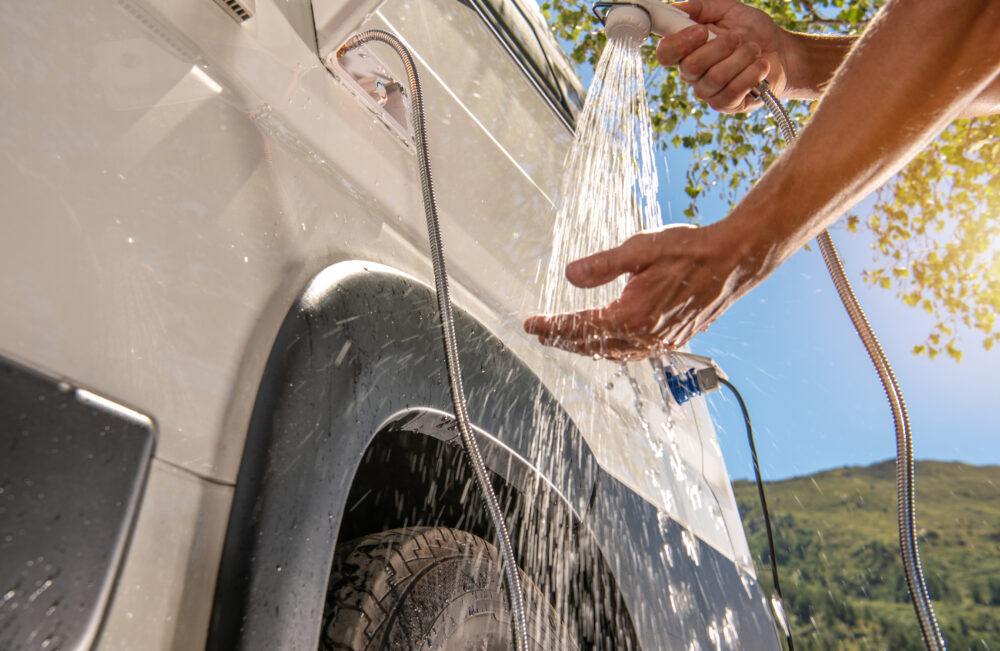
How To Improve Your RV Water Pressure
RVing is all about freedom, the open road, and relaxing destinations. However, as with any form of accommodation, it has its own set of challenges. One frequently encountered challenge is maintaining the right water pressure. An inconsistent or poor water pressure can turn a pleasant RV vacation into a frustrating experience. Let’s delve into common RV water pressure problems and their solutions.
Understanding Water Pressure in RVs
Before diving into specific problems, it’s essential to understand RV water pressure basics. Most RVs are designed to operate at a water pressure range of 40 to 60 psi (pounds per square inch). If the pressure is too low, water won’t flow effectively. If it’s too high, it can damage the RV’s plumbing system.
Low water pressure throughout the RV
Problem: One of the most common issues is consistently low water pressure in the entire RV.
Solutions:
- Check the main water source: If you’re connected to a campground source, the problem might lie there. Check if the campground has general low water pressure.
- Examine the water hose: Kinks, bends, or damage to your RV water hose can restrict flow. Ensure your hose is in good condition and properly connected.
- Clean or replace the water filter: Over time, the RV water filter can become clogged. Regularly cleaning or replacing the filter can maintain optimal water flow.
Low Water Pressure in Specific Areas
Problem: You might find good water pressure in the shower, but barely a trickle in the kitchen sink.
Solutions:
- Check individual faucets: The aerators on individual faucets can become clogged with sediment. Regularly cleaning these can ensure consistent water flow.
- Inspect the water lines: There may be kinks or blockages in the water lines leading to specific areas.
High water pressure
Problem: While less common than low pressure, high water pressure can be even more concerning, potentially leading to leaks or burst pipes.
Solutions:
- Use a water pressure regulator: This device can be attached to the water hose to control the water pressure entering your RV. They’re inexpensive and can prevent costly damages.
- Regularly check for leaks: High pressure can strain your RV’s plumbing. Frequently inspect your system for leaks, paying attention to joints and connections.
Fluctuating Water Pressure
Problem: Inconsistent water pressure can be as annoying as consistently low pressure. One moment it’s fine, and the next, it drops or surges.
Solutions:
- Check the water pump: If you’re using your RV’s onboard water, the water pump may be the culprit. It could be failing or might be improperly sized for your RV.
- Inquire about campground issues: If you’re connected to a campground source, they might be experiencing water issues, especially during high demand times.
Noisy pipes
Problem: Sometimes, water pressure issues can be accompanied by noisy pipes, often described as a hammering sound.
Solutions:
- Install water hammer arrestors: These devices, when installed close to the noise source, can absorb the shock caused by water stoppage, preventing the hammering sound.
- Secure loose pipes: Sometimes, the noise is simply due to pipes vibrating against the RV’s structure. Securing any loose pipes can mitigate this.
Water takes a long time to heat up
Problem: While not a direct water pressure issue, waiting forever for hot water can be related and is a common complaint among RVers.
Solutions:
- Insulate water pipes: By insulating the pipes leading to your hot water heater, you can speed up the heating process.
- Consider a tankless water heater: If you find you’re consistently running out of hot water or waiting too long, a tankless system might be a more efficient choice for your RV.
Sediment build-up in the water heater
Problem: Over time, sediment can build up in your RV’s water heater, leading to reduced water pressure.
Solutions:
- Regularly flush the water heater: Every few months, especially if you’re using your RV frequently, flush out your water heater to remove any sediment build-up.
- Install a water softener: If you’re traveling in areas with hard water, using a water softener can prevent excessive sediment accumulation in the water heater.
Conclusion
Maintaining the right water pressure in your RV is crucial not just for comfort but also for the longevity and functionality of your plumbing system. By being aware of potential problems and knowing how to address them, you can ensure that your travels remain as smooth and enjoyable as possible.
Whether it’s a quick aerator cleaning or a more involved solution like installing a pressure regulator, taking proactive steps can make all the difference in your RVing experience.
Make sure you keep track of all your RV maintenance and repairs with an online tool such as RV LIFE Maintenance. Not only can you keep all of your documents in one place, but you’ll also receive timely reminders when maintenance is due to help you avoid costly repairs and potentially serious accidents.




Easy fix you did not mention and could be first go to — buy a high flow water filter, can make a huge difference compared to the standard filters. Most people need this solution and the others are less likely.